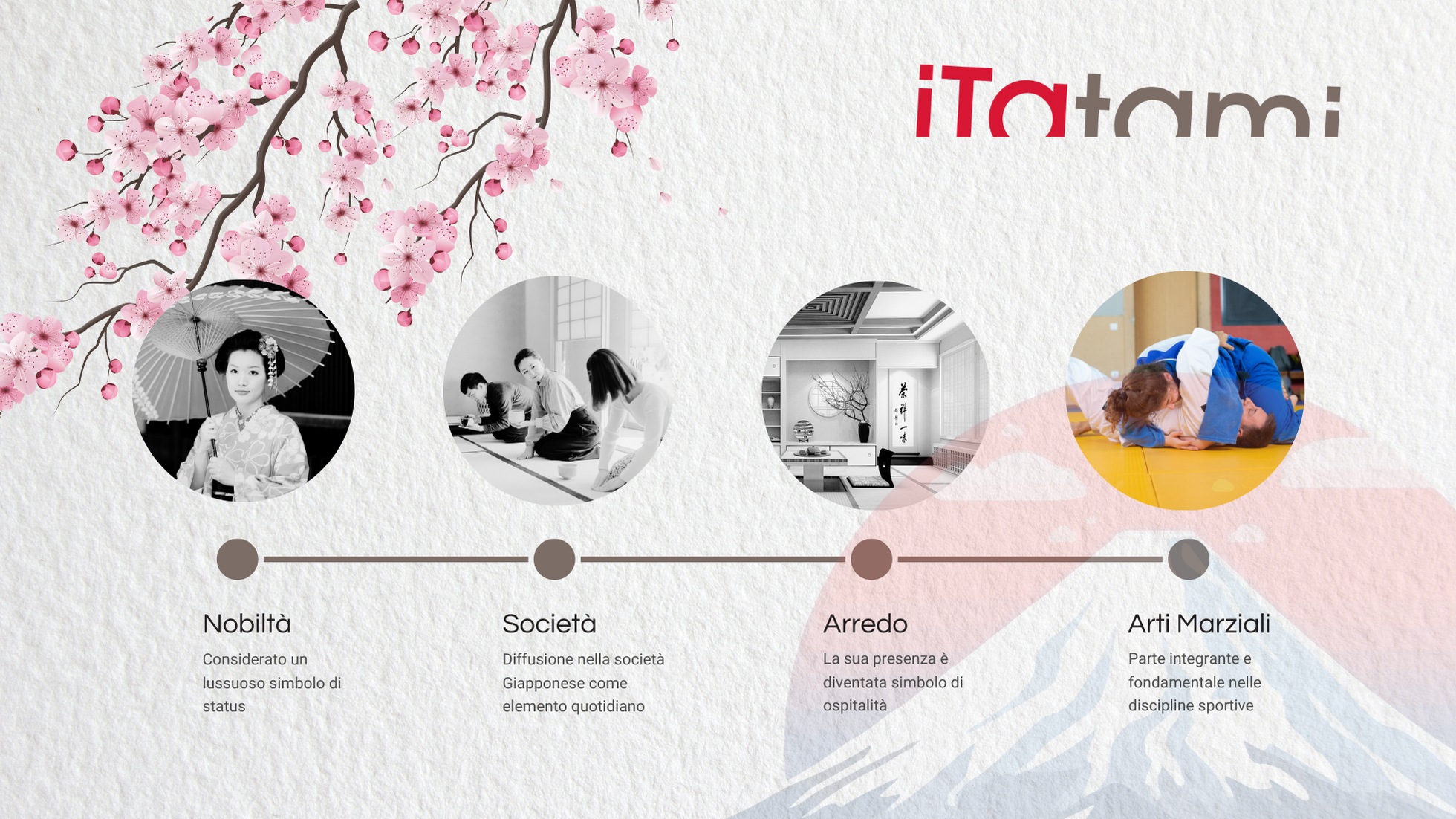Origins and History of the Combat Tatami
Tatami might seem like a mystery to many, but is it really like that and what is it meaning of tatami? The tatami is not just a simple Japanese flooring but is a fundamental element of Japanese culture, enriched by an intriguing history that blends perfectly with the discipline of martial arts.
But what secrets lie behind these mats called tatami, making them so valuable? And what is the reason why they became a irreplaceable pillar in the panorama of martial arts, welcomed with fervor and passion?
Content index
What is Tatami?
The tatami represents much more than just Japanese carpet; it's a real one cultural symbol steeped in history and tradition. In its origins it was considered a luxurious symbol of status, reserved exclusively for the Japanese aristocracy to sit or sleep on it, thus detaching themselves from the cold and hard floor. This elitist use he underlined not only the social importance of who owned it, but also the craftsmanship and the material value of the tatami same.
As time passes, the tatami has surpassed the boundaries of nobility, spreading widespread in Japanese society until it became a daily element in homes of all social classes. His presence has become a symbol of hospitality and warmth, enriching home life with its natural beauty and the comfort it offers.
In addition to homes, the tatami has found a prominent place in temples, where it has contributed to creating an atmosphere of sacredness and contemplation, and in the dojos, the dedicated gyms at the practice of martial arts, the tatami transforms:
it is no longer just a piece of furniture, but becomes an integral part of the sporting discipline, providing an adequate and safe surface for training and competition. His ability to absorb impacts and of reduce the risk of injury has sanctioned theindispensable in martial arts, contributing to respect for ancient Japanese traditions also in this area.
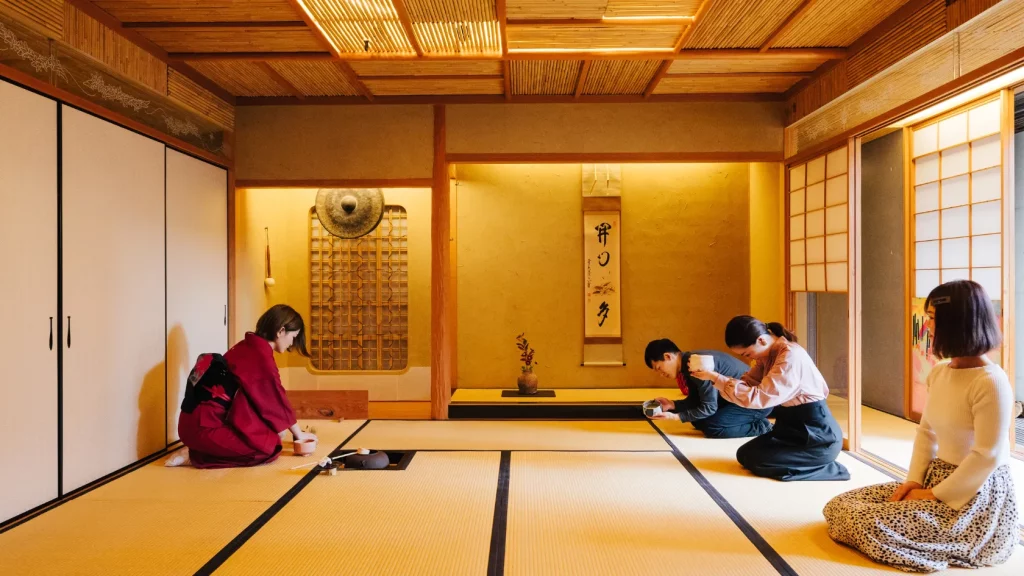
The History of Tatami
There history of the tatami it is profoundly rooted in Japanese tradition, reflecting the changes and evolutions of Japanese society over the centuries. Initially, these elements were exclusive prerogative of the aristocracy, symbols of luxury and social distinction used in noble residences, castles and palaces for sitting, sleeping or simply as a sign of prestige. Their production, rich in refined artisan techniques And first choice materials, was an art reserved for highly specialized masters.
As time passes, the tatami began to spread beyond borders of the aristocratic class, coming also adopted by the warrior classes and, subsequently, by the people. This democratization of the tatami marked an important change in Japanese society, making it a familiar item in the homes of all Japanese. Its function has evolved, from a symbol of status to an essential component of the home, helping to define the living space and improve home comfort.
During the Muromachi period (14th-16th century), the use of tatami was further consolidated, becoming the main seating surface And the sleep in Japanese homes. This period also saw the integration of the tatami in the architecture of temples and theaters, highlighting its cultural and spiritual importance. The layout of the tatami in the rooms followed (and still follows) precise rules, reflecting the principles of harmony and Japanese aesthetics.
The Edo era (1603-1868) he brought with him afurther diffusion And standardization of the tatami, which became a omnipresent element in Japanese homes. The dimensions of tatami mats were standardized to facilitate production and installation, and their presence began to influence the architecture of homes, with rooms designed specifically to accommodate them.
In modern era, The tatami he kept his significant role in culture and in Japanese living, while adapting to the changes of the times. Innovations in materials and production methods they have allowed us to preserve the tradition of the tatami, while making it compatible with a contemporary lifestyle.
The history of the tatami is, therefore, a fascinating journey through the ages, which reflects not only the evolution of Japanese society but also the ability of this element to adapt and maintain its cultural, aesthetic and functional value.
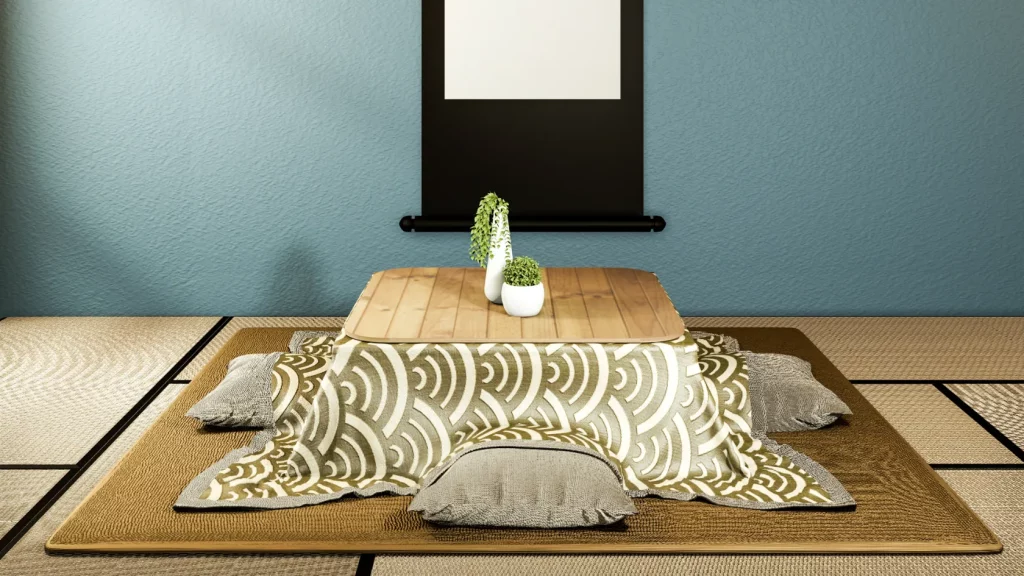
Tatami in Japanese Culture
In the cultural fabric of Japan, the tatami occupies a prominent position, far beyond his own practical paving function. This element, in fact, profoundly embodies the Japanese philosophy and lifestyle, in which the search for simplicity is harmonized with maximum functionality. There presence of tatami in Japanese homes it is not just an aesthetic or functional choice, but represents a real manifesto of values that have ancient roots in the culture of the country.
There simplicity of the tatami, with its uniform surface and the natural color, reflects the Japanese principle of “ma,” or the empty space or interruption that serves to enhance what surrounds it. In this context, the tatami is not just a surface to stand on, but a space that invites reflection, calm and open-mindedness. This concept yes aligns perfectly with Zen philosophy, which places theemphasis on essentiality and meditation as ways to reach a profound understanding of existence.
From a functional point of view, the tatami offers a healthy living environment and comfortable, thanks to its thermal properties and ability to regulate humidity. This attention to physical well-being fits into a broader context of respect and care for the natural environment, principles that are fundamental in Japanese culture. The use of natural and renewable materials for the production of tatami is a concrete expression of this respect, which translates into a sustainable lifestyle in harmony with the surrounding nature.
The tatami symbolizes hospitality and human warmth. Welcoming guests in one tatami room is considered a gesture of great consideration and respect, which reflects the importance of interpersonal relationships and sharing in domestic spaces. This social dimension of the tatami highlights how, in Japanese culture, everyday objects are imbued with meanings that go far beyond their material immediacy.

Tatami Today: Innovations and Sustainability
The evolution of the tatami over time has embraced technological innovations and new materials (also recycled materials), adapting to contemporary needs without betraying its traditional essence. This balance between innovation and tradition it is particularly evident in the world of martial arts, where the tatami have undergone significant upgrades to better respond to practical needs, hygiene And environmental sustainability.
THE modern materials introduced in the production of tatami they include high density foams, resistant polymers and technological fabrics, selected for their ability to absorb shocks, durability and ease of maintenance. These innovations have made it possible to obtain lighter tatamis, easy to install and transport, ideal for dynamic and multifunctional contexts such as gyms and sports centres, where flexibility in the use of space is fundamental. A clear example are i foldable pleatup tatami.
Despite the introduction of these synthetic materials, the design and production of modern tatami are still deeply inspired by principles of Japanese tradition. The objective is to maintain that balance between stability and flexibility that characterizes traditional tatami, ensuring a safe and comfortable practice of martial arts. Attention to quality, aesthetics and functionality therefore remains central, even in the era of technological innovations.
At the same time, the sustainability emerges as a key aspect in the choice of materials and in the production processes of contemporary tatami. The search for Eco-friendly solutions drove the development of tatami made with recycled or easily recyclable materials, reducing environmental impact without compromising performance. This approach reflects a growing trend towards a sustainable lifestyle, in line with the values of respect and harmony with nature that the tatami symbolizes.
Tatami and Martial Arts
The link between the tatami and the martial arts Japanese is profound and significant, so much so that they consider the tatami not just a physical element but a true ally in martial practice. This close relationship arises from the need to guarantee safety and protection to athletes during training and competitions, where falls and impacts are commonplace. There peculiarities of the fighting tatami, with its structure capable of absorb shocks, makes it ideal for cushioning blows, minimizing the risk of accidents.
In the judo, as well as in other martial arts such as jiu-jitsu, aikido and the karate, the tatami takes on a central role, becoming a symbol of respect and dedication towards the art itself. Its use extends beyond the practical functionality; the tatami becomes an integral part of the ritual, where each athlete competes not only with his opponent but also with himself, in an environment that promotes respect for the rules and personal growth.
There choice of tatami for martial arts it is not random but is based on very specific criteria that take into account its composition and its ability to adequately respond to the needs of each discipline. Traditionally made with rice straw and covered with a woven fabric, the tatami offer a stable but at the same time flexible surface, a fundamental characteristic for the execution of techniques that require precision and control.
Lthe evolution of the tatami in the martial context it also saw the introduction of modern materials, which have improved its performance in terms of durability and maintenance, without however betraying its original spirit. These new tatamis, despite being more resistant and easier to clean, retain the necessary softness to ensure the safety of athletes.
The role of tatami in martial arts it therefore goes far beyond the simple function of flooring; it it is an element that embodies the values of respect, discipline And dedication that characterize these practices. His presence in the dojo And gyms it is not only functional but symbolic, representing a bridge between past and present, between tradition and innovation, in the spiritual and physical journey of martial arts practitioners.
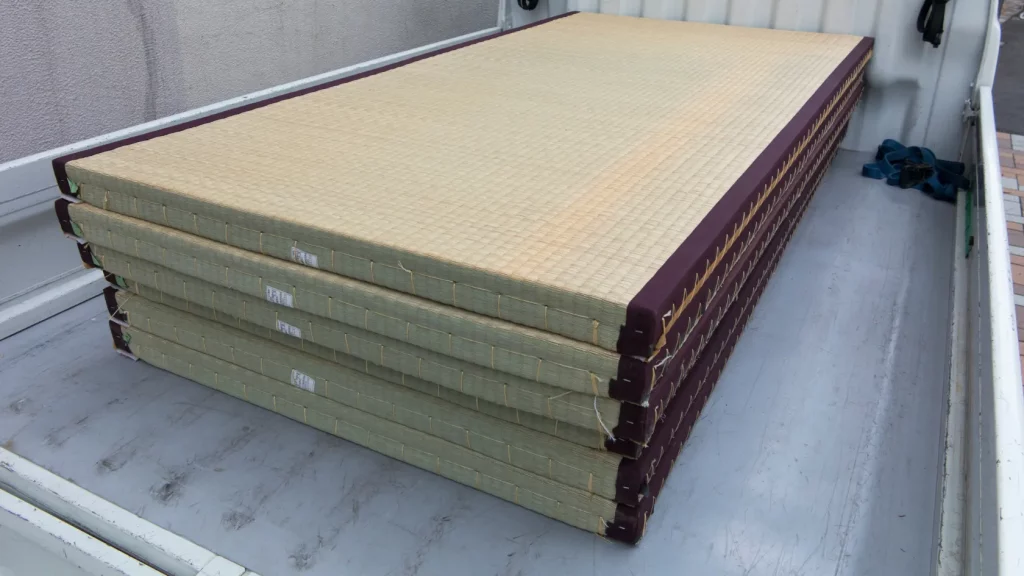
The Materials of Traditional Tatami
There tradition in the making of tatami it is an art that has its roots in a profound knowledge of the natural materials and theirs processing. Traditional tatami mats are emblematic examples of this craftsmanship, being compounds mainly from rice straw for the internal core and covered with a woven rush fabric, known as igusa, for the upper surface. This combination of materials not only gives tatami mats their distinctive aesthetic characteristics, but also plays a crucial role in their functionality.
There rice straw, used to create the heart of the tatami, is chosen for its ability to provide a solid and at the same time elastic base. This elasticity is fundamental for absorb shocks and to offer adequate ergonomic support, both in residential and residential contexts in martial practices. The process of assembling these materials requires precision and care, ensuring that the tatami maintains its shape and integrity over time.
The igusa covering adds to the tatami not only beauty, with its natural texture and warm color, but also unique properties. The woven rush is notoriously resistant to wear, it also contributes to the well-being of environments thanks to its hygroscopic properties; he's able to absorb moisture in excess and release it when theair is too dry, thus helping to naturally regulate the climate of living spaces.
Another fundamental aspect of materials used in traditional tatami and their sustainability. Both rice straw and igusa are renewable resources, which respect the environment and reflect the Japanese philosophy of harmony with nature. This choice of materials not only guarantees a reduced environmental impact but also enriches daily life with elements that speak of a profound connection with the earth and its resources.
How to Choose a Tatami
Choosing a tatami suitable for your needs requires attention and knowledge of some fundamental aspects, which go beyond mere aesthetic preference. That theintended use both in the domestic context or in a dojo, For martial arts or to enrich the environment with a touch of Japanese tradition, it is It is crucial to carefully evaluate the use, materials and dimensions of the tatami. Careful selection guarantees not only the durability and functionality of the product but also maximum well-being and safety for those who use it.
Use: The first step in choosing a tatami is to define the specific use that will be made of it. In the context of martial arts, for example, is essential opt for tatami which ensure adequate cushioning for minimize the risk of injury during practice. For use domestichowever, it could favor the aesthetic aspect and comfort, without neglecting resistance and ease of maintenance.
Materials: The materials with which the tatami influence be his duration be the comfort. Traditionally, the tatami are made with rice straw and coated with igusa fabric, offering aauthentic experience And natural. However, technological innovations have brought to the market tatami made with synthetic materials, more resistant and easier to clean, especially suitable for gyms and martial arts schools.
Dimensions: The dimensions of the tatami must be chosen based on the available space and the specific needs of use. For martial arts, it is essential that the The surface of the tatami is large enough to allow the safe movement of the athletes. In the domestic context, the dimensions may vary depending on the desired effect and the space in which the tatami will be placed.
To delve deeper into these aspects and obtain detailed information on the standard dimensions of the tatami used in the different martial disciplines, you can consult the article on the measurements of the tatami. One is available here guide to orient yourself in choice of the most suitable tatami to your needs, providing specific indications on the ideal measures based on the martial art practiced.
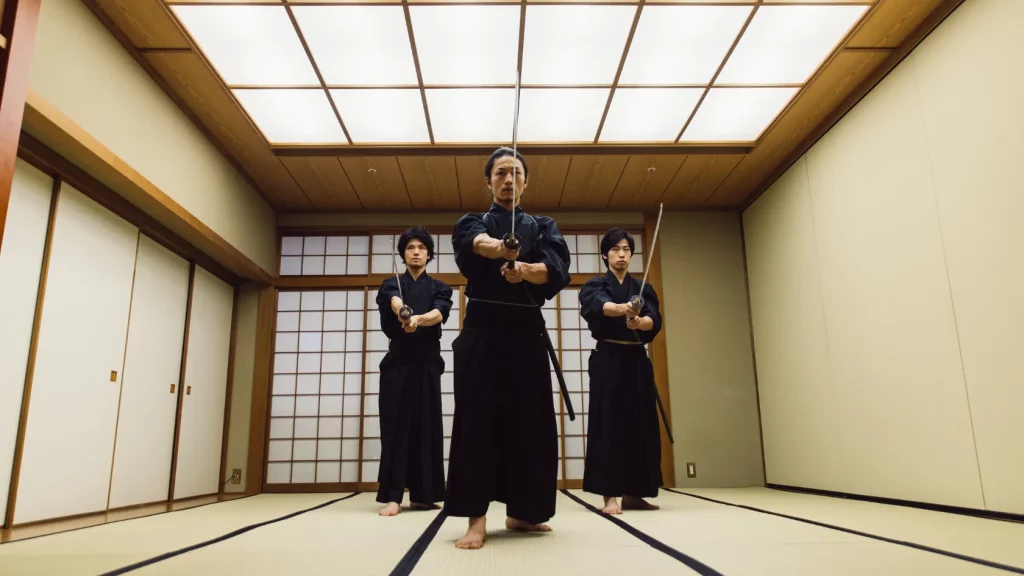
Tatami maintenance
There care and maintenance of the tatami are crucial aspects to ensure their longevity, while preserving their natural beauty and theirs functional characteristics. Since tatamis can be made from a variety of materials, give her traditional natural fibres to more modern and synthetic ones, the necessary maintenance practices can vary significantly. Furthermore, the use made of it – domestic, in dojo or in public spaces – affects the type of care they need.
For Traditional Tatami:
THE traditional tatami, made of rice straw and covered with igusa (woven rush), they require attention details to keep their qualities intact. It's important avoid direct exposure to sunlight, which can fade the color of the tatami and dry out the materials, making them brittle. There Regular cleaning is essential and must be carried out carefully: it is advisable to use a soft broom or a vacuum cleaner with a brush to remove dust and dirt, avoiding the use of water that it could damage the tatami.
In case of stains, is preferable act promptly with damp cloths well wrung out and, possibly, with delicate detergents specific for tatami, always testing on a small hidden area before application. L'Humidity is another factor to keep under control: environments that are too humid can favor mold formation, while those that are too dry can cause cracks and release of fibers. Using dehumidifiers or humidifiers to maintain a balanced humidity level can be an effective solution.
For Modern Tatami:
The tatami made with Modern, synthetic materials are generally more durable and easier to maintain. However, regular cleaning is also important for these to avoid the accumulation of dust and debris. There most of these tatamis can be clean with damp cloths and non-abrasive detergentsfollowing the manufacturer's specific instructions. It's still good As a rule, avoid water stagnation and make sure the tatami is completely dry before reuse.
Prevention and Treatment:
Regardless of the type of tatami, some preventative practices can help preserve its quality over time. For example, Changing the orientation of the tatami periodically can prevent wear. And then It is useful to limit direct contact with sharp or very heavy objects which could damage the surface.

Curiosities about the Tatami
The tatami, a simple yet symbolic element of Japanese culture, holds within itself numerous secrets And curiosity which reflect the depth and attention to detail typical of Japan. One of the most fascinating aspects of tatami is precisely about the rules that govern its layout inside the rooms, rules that they date back centuries ago and which are imbued with meaning cultural And spiritual.
Traditionally, tatami mats are arranged so that their joints do not form a cross, since this pattern is considered a bad omen. Furthermore, avoiding direct crossing of joints also serves to prevent the accumulation of dust and dirt, demonstrating how practicality and spirituality can blend harmoniously in Japanese culture.
A another curious element concerns the size of the tatami, which are not random but respond to aesthetic proportions. The traditional dimensions of the tatami vary slightly depending on the region of Japan to which it refers, reflecting the diversity and the wealth culture of the country.
The number of tatami used to floor a room reveals also the its use or social importance attributed to the guests who spend time there. For example, one room of 4 or 5 tatamis is traditionally considered ideal for a tea Room, while larger dimensions indicate spaces intended for more prestigious guests or more formal functions.
The last curiosity to know is that the tatami it also has a role in determining the microclimate of a room. Thanks to the natural materials with which it is made, the tatami is capable of absorbing moisture in the humid months and to release it during the drier periods, thus helping to maintain a comfortable environment inside the home. This ability to naturally regulate humidity reflects the harmony between man and nature, a fundamental principle of Japanese philosophy.
Where to buy tatamis?
For those looking for quality tatami, yes to practice martial arts both to enrich domestic spaces with a touch of Japanese tradition, there are several purchasing options. You can find tatami mats at specialized shops that they offer martial arts items or dedicate yourself to Japanese-inspired interior decorations. These points of sale can be either physical, thus allowing for touch the quality of the product first hand, both online, offering the convenience of a peaceful choice from home.
However, for those who they wanted a personalized service and the guarantee of a product that meets your needs perfectly, it's possible ask us for a quote for the tatami. We offer a wide range of tatami, guaranteed for 5 years, suitable for any type of use and customizable terms of size And materials. On our site, you can explore the wide catalog and discover the different options available.
If you need assistance in choosing the tatami best suited to your needs or if you would like a personalized quote, do not hesitate to contact us. Our experience and professionalism are at your disposal for guide you in selecting the perfect tatami, whether for the dojo, for yours personal practice of martial arts, or to add a unique and elegant design element to your home.





